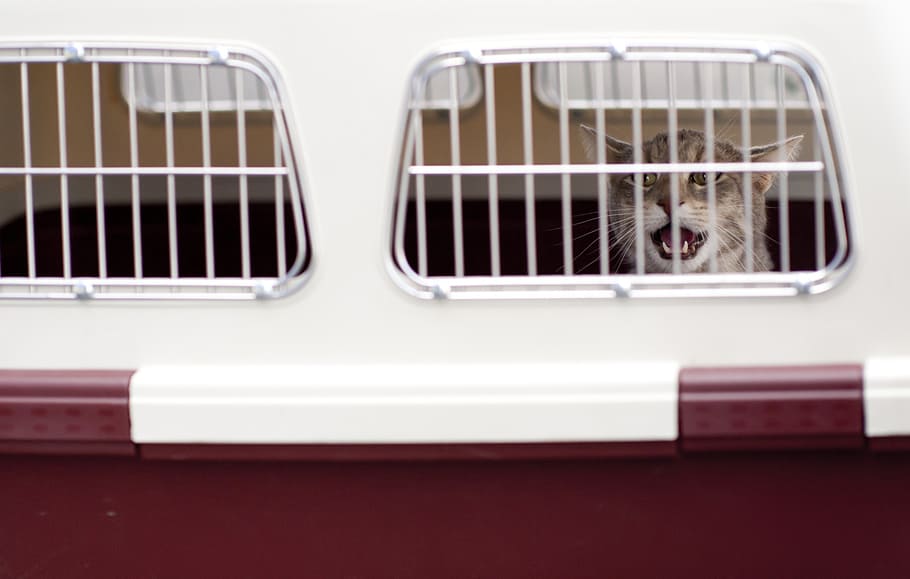

Relocating is not only stressful for people – everyone who owns a pet knows that they also have a hard time coping with changes to their living environment. If you’re moving with cats, keep in mind that they are highly territorial creatures that favor their routine above anything else, so they need to adjust both to the travel and the new home. Knowing that you’d want to do as much as you can to make it easier for both of you, here are the tips on how to do it.
Moving With Cats to a New House Is a Stressful Effort, But You Can Make It Less So
We understand that the move you’re planning is taking a lot of your time and energy, but don’t forget your pets if they’re coming along. They also need preparations for the change and travel. No matter what your reasons to move are, your pet will need your attention and a certain period to adapt. So start preparing your cat as soon as you know that you’re relocating. It’s all about minimizing the cat’s anxiety and thus making it easier for her to go through this.
Your Cat, Just Like Kids, Should Have a Healthy Transition to a New Home
If you have kids, you know that pets can act just like them sometimes. They will be confused by all the fuss, packing, noise, and unfamiliar people in the house. Pets need some time to acknowledge that nothing wrong is going to happen to them and that they are safe, even if you seem nervous.
What to Consider Before the Move to Prepare Your Cat for the Upcoming Stress
Your furry friend surely has a unique personality, but some things apply to all of them. Go easy and start with small steps before moving so that there’s no shock and fear which can lead to aggressive behavior.
- Go to the vet, especially if you’re traveling by air. Make sure you have all the shots and that your cat is ready, healthy, and capable for the trip. Get all the records from your current vet since you’ll need a new one once you come to another state.
- Since your feline will be spending time in its carrier during the move, try to make it more comfortable. Start by trying to make them like the carrier. They’re going to spend a considerable amount of time in it, so they’ll need to adapt before the relocation day comes. One way for them to feel comfortable in the carrier is to put some of their favorites inside, like toys or treats. Most cats don’t like them, so try to turn it into a happy place.
- Keep the usual things as they are. Pets are good with routine, so continue feeding them at the same time and don’t skip the cuddles.
- Don’t surprise your cat with moving boxes or movers. Bring things one by one, or as slow as you can when you’re packing your moving essentials. Let the movers know that you have a cat and that you don’t want to upset it. You don’t want it to feel scared by unfamiliar sounds, smells, and people.
How to Make the Moving Day More Comfortable?
The relocation day itself is confusing and turbulent since there will be a lot of things going on. The most important thing is to keep your feline safe and sound. It might want to run away if it gets scared or annoyed.
Once the movers arrive at your home to pack and load the items, your furry friend should be isolated. You can do that by emptying one room and placing its litter box, food, water, and toys inside. Keep the door shut and tell the movers not to open it. Another option is to leave the animal with someone you trust or hire a professional pet sitter while movers do their job around the home.
What to Do During the Move to Help Them Cope
Your feline friend should become comfortable with the carrier by now. If you’ve already traveled together, you know how it reacts to long-distance trips. In any case, it’s best to feed it a smaller meal than usual on the day of the move, so that there’s no risk of vomiting. If you’re traveling by car, the cat should always be with you in the cabin, never in the trunk.
Here’s a Guide If You Wish to Transport Your Cat by Plane
It’s not recommended, but it’s possible. If you have a Persian, consult the vet about the trip. Call the airline in advance and see if it’s possible to bring your pet into the cabin area. Book your flight early, check all the info about bringing a cat onto the plane, and ask about possible incidents. Try to book a direct flight, and don’t forget your cat’s documents needed for traveling.
 Resist the urge to let them out of the carrier
Resist the urge to let them out of the carrier
Introduce Your Cat to the New Place Room by Room
You’ll have a lot of work once you arrive. Unpacking, new documents, new people, and jobs, but don’t forget that your pet is going through a similar situation. See how your pet acts after the move and try to go along. Pets can help with relocation depression, but you should be there for them as well.
Before Opening the Carrier, Make Sure That the Place Is Safe
All the doors and windows should be closed. Check if there are some potentially dangerous objects around the new home, and don’t let your kitty roam around just yet. Start introducing it to the apartment room by room, and as you do that, place something familiar into every area, so that they can recognize the smells.
Choose Where the New Bed, Food, Water, and Litter Box Will Be
Cats are territorial beings and like to know every bit of the space they live in. Try to have a spot for them to hide until they feel comfortable enough to start exploring – once they do, everything will be easier. Until then, keep the routine – put its essentials like the food tray in one place and don’t change it.










